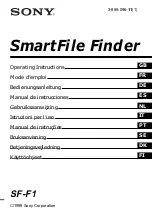
familiarize yourself with your scanner's features, you can put the scanner
to work for you. You simply find the communication you want to receive,
then set the scanner to scan those frequencies.
A frequency is the tuning location of a station (expressed in kHz or MHz).
To find active frequencies, you can use the search function, you can
search bands, which are preset ranges of frequencies, or service banks,
which are groups of frequencies categorized by type of service.
When you find a frequency, you can store it into a permanent memory
location called a channel, which is grouped with your other channels in a
channel-storage bank. You can then scan the channel-storage banks to see
if there is activity on the frequencies stored there. Each time the
scanner finds an active frequency, it stays on that channel until the
transmission ends.
Another option is to store the frequency into a temporary memory location
called a monitor memory until you decide to move it to a channel.
Just keep in mind - you search frequencies and scan channels.
A LOOK AT THE KEYPAD
Your scanner's keys might seem confusing at first, but this information
should help you understand each key's function.
SCAN - scans through the stored
channels.
MAN - stops scanning and lets you
directly enter a channel number
or frequency.
PROG - programs frequencies into
channels.
MON - stores frequencies into and
accesses the 10 monitor
memories.
SVC - selects AIR (aircraft), MARINE
(watercraft), FIRE
(Fire-fighting), and
WX (weather) service banks when
used with the corresponding
number key.
LIMIT - turns on the limit search mode
and sets the frequency range.
DATA - turns on or off the data signal
skip feature.
PRIORITY/H/S - sets and turns on and off
priority for a particular
channel; turns on and off the
Hypersearch mode.





































